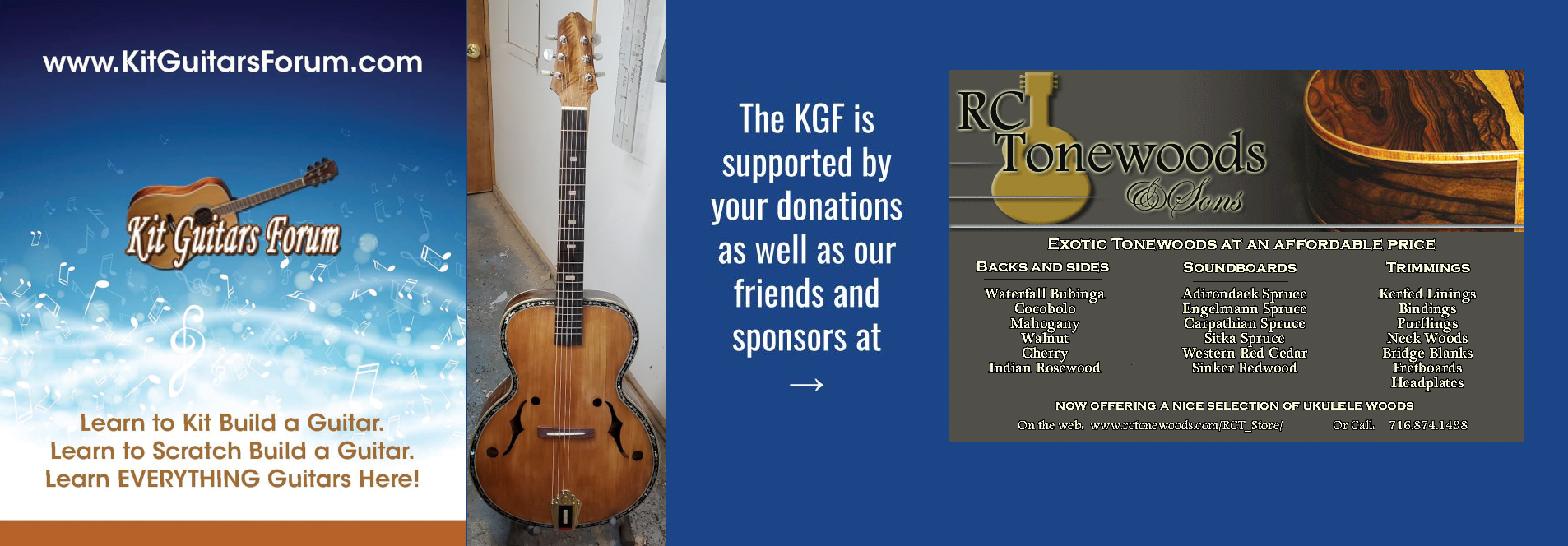I'm wanting to build a classical guitar, but some things have me a bit worried.
1. Is it necessary to "slope" the fretboard? Is it higher on one side than the other?
2. I've seen them built with the neck attached to the top and the top on a dished surface. Is this needed? Can one be built with the top contoured from the bracing?
3. I've also seen where the tops are thicknessed with varying amounts of thicknessing depending on what part of top is being dealt with. Can a top of one single thickness work well and give good sound?
4. Many builders talk about tuning the top to a certain pitch. How difficult is that to attain? What tools are needed to determine that pitch?
5. I have Romanillos' book, but haven't got into it yet. Is it a good text to use in creating a Spanish type guitar? If not, what are some others that are good at explaining and walking someone thru the process?
6. Robbie O'brien has a dvd set on building a classical from materials from LMI. Has anyone used it and have positive results?
I've built 4 steel string acoustics, so I'm not afraid of working with the wood, but the classical/Spanish style of building is a whole different thing.
Thanks for your input.
Bob
Questions on building a Classical guitar
-
naccoachbob
- Posts: 477
- Joined: Thu Dec 03, 2009 9:25 am
- Location: Nacogdoches, Tx
-
johnnparchem
- Posts: 2354
- Joined: Sat Apr 10, 2010 10:50 pm
- Location: Seattle
- Contact:
Re: Questions on building a Classical guitar
Some slope the fret board about a mm with the bass E string a mm or so lower than treble E string. A typical setup on a classical is 4 mm for the bass E and 3 mm for the Treble E. Without sloping the fret board this action difference could be achieved by having the saddle sloped instead by 2 mm. I have done it both ways.Is it necessary to "slope" the fretboard? Is it higher on one side than the other?
You can build on a flat board. The bracing is light but you will get some doming. But you can build flat. Often the opposite is actually done flat braces and a dish twice as deep as the desired dome. You get about a 50% spring back. If you have a 25 or 28 foot radius dish you can glue the fan braces in the dish.I've seen them built with the neck attached to the top and the top on a dished surface. Is this needed? Can one be built with the top contoured from the bracing?
One thickness is fine. It will be thinner than a steel string. more like 2.1 mm instead of 2.8 mm for spruce.I've also seen where the tops are thicknessed with varying amounts of thicknessing depending on what part of top is being dealt with. Can a top of one single thickness work well and give good sound?
I have the Romanillos book and it is targeted at someone with either a general interest or someone who knows how to build classical and was interested in seeing how he did it.I have Romanillos' book, but haven't got into it yet. Is it a good text to use in creating a Spanish type guitar? If not, what are some others that are good at explaining and walking someone thru the process?
6. Robbie O'brien has a dvd set on building a classical from materials from LMI. Has anyone used it and have positive results?
Robbie has an older DVD that he sells I used it to build my first guitar. It is worth the $35. He has changed his build process some. He has a very detailed on line course. A lot more expensive but worth it. It is a very detailed course. He also sell it piece meal so if there are chapters you are interested in his instructions are very good.
-
naccoachbob
- Posts: 477
- Joined: Thu Dec 03, 2009 9:25 am
- Location: Nacogdoches, Tx
Re: Questions on building a Classical guitar
Thanks, John. I appreciate the info. I'm really enjoying playing this nylon stringed guitar. It gets about 75% of the work :)
Much obliged,
Bob
Much obliged,
Bob

